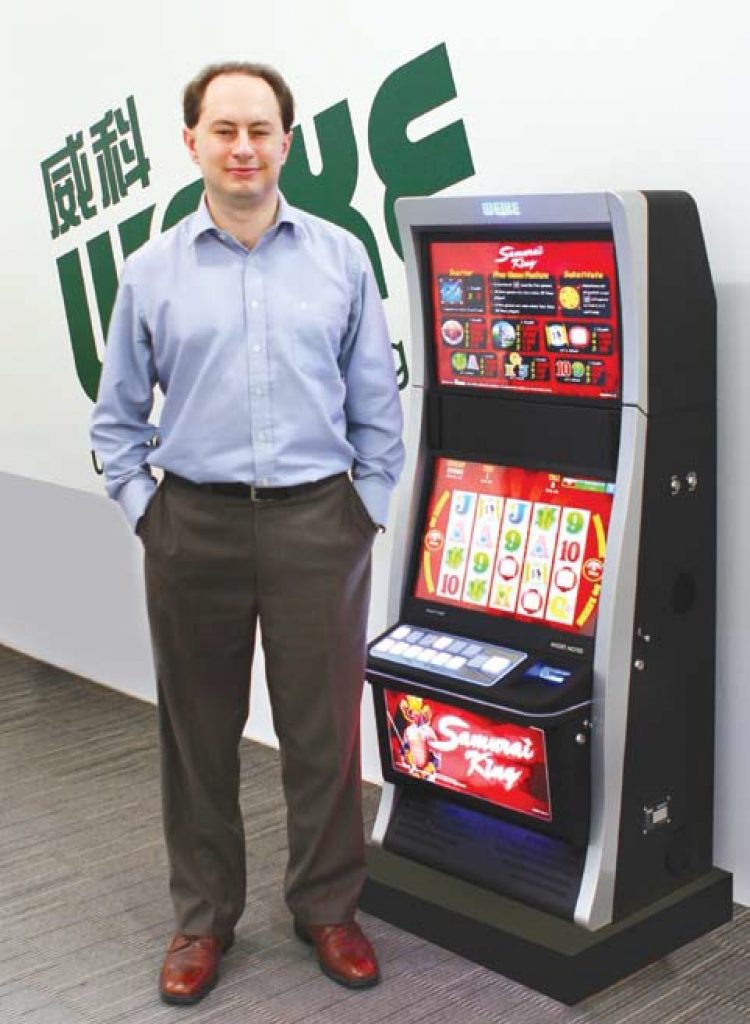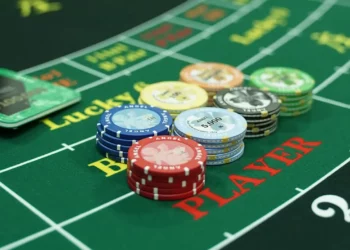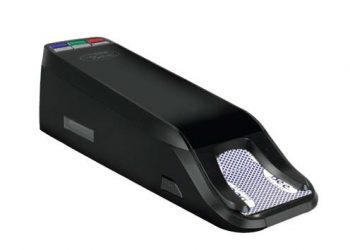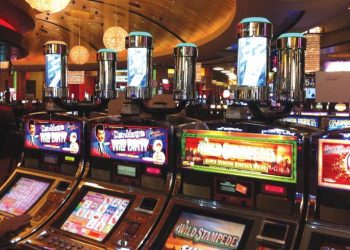Slot suppliers need to trust the intelligence and good sense of their players, says Weike’s Andrew Masen
If you thought casino slot game design was only about the maths, think again. The best design teams need to think like a player and see and feel what the player experiences. Only then can the technicians produce a game with the necessary ‘stickiness’ to keep going for several generations; thereby earning back many times over the money and resources invested. Andrew Masen, (Vice President) Slot Gaming, the head of Weike Gaming Technology’s game design department, gives Inside Asian Gaming some insight into how it can be achieved.
IAG: Is there such a thing as a ‘typical’ background for a slot game designer?
Well I was a [mathematics] tutor at a university in Australia. But after a while I saw the need to get out there into an industry where I could apply my skills. I joined Stargames as a game designer back in 2002 in Sydney. In the next few years I learned a lot about the Australian gaming industry. Every state and territory of Australia has different standards and regulations and Stargames was looking to grow in each of those markets. Its product line up included not only slot machines but also multi-terminal games.
What took you into gaming as opposed to other industries?
I was looking for a specific challenge I think—something that was exciting and a little bit different. I often tell people that I wasn’t looking forward to sitting in front of a computer and just pushing about numbers; which I’m sure I was well qualified to do.
I had always enjoyed watching people gamble—whether that was at horse races, in a casino or in small slot halls. So the opportunity came along, and I grabbed it. Designing games for casinos seemed very appealing. I wondered why it as that some games were more appealing than others, and why was it that certain features were exciting over and over again. I wanted to understand this more. And I’m still learning now with Weike; which is most satisfying.
“Even if you tried to copy many components of someone else’s successful game, you will never do it as well. You might come close, but you certainly won’t do better.”
Has your experience as a tutor shaped your work as a game designer?
Yes. Once I became part of a team and that team expanded and junior people came on board, then having that little bit of teaching experience was helpful. I was able to explain clearly and precisely gaming concepts to those junior team members.
Is game design top down—you telling the team what you want—or bottom up; them coming up with ideas?
It’s a bit of both. I think it’s very important that the junior engineers and mathematicians are free to be creative— with their own individual approach—to the games. But there comes a point where a certain review is made. If the idea is not quite ready for the market it may be put on hold. The other side of it is that the idea might best be incorporated into another product.
Is there a tendency in the industry for all game designers to want to copy the really successful games?
Even if you tried to copy many components of someone else’s successful game, you will never do it as well. You might come close, but you certainly won’t do better. I think it’s important for a manufacturer to stand out—especially if they’ve got some innovative, unique, approach. The player’s overall perceptions of the game might be similar. The feature or the way it’s presented can be subtly different.
I understand creating a game that people love must be satisfying. But is putting together the maths also intellectually exciting?
I think so. A lot of it involves referring what has been successful and not successful in the past, and learning from that and moving forward. That includes fixing your own mistakes and improving. One of the most satisfying areas—and I think where the best products come from— is that when you have a successful game, the team can build on that success. So they start with exactly the same style of game and game model, and they add little things to it. And players enjoy this as well. They grow to love a certain game, and then they come across the next game in that series. They find something new and exciting, but at the same time there’s the core of what they grew to love in the first place.
How do you ‘crunch’ the maths for a game?
To a mathematician the maths is quite simple. It’s about simple combinations and counting. From game- to-game, the formula, the structure, of that maths is pretty much the same. When we introduce a new feature or a new element, my team has to calculate the new maths. But it’s when we analyse those winning patterns within that maths— that it gets more complicated. We have certain formulae and structures in place that simulate game play, and do calculate the numbers for us. We can just plug in values and plug in new ideas and new features. But it’s the analysis that is key. It’s of benefit to have a mathematical background, and it’s important to have that team of mathematicians making a contribution to game development.
Is the term ‘random number generation’ as applied to slot machines a little misleading? I ask because there have to be a certain number of winning events available and a certain return to player available over a given period.
The set of outcomes in a given game, and in particular the most popular games, is actually finite. People may never win the biggest prize, but it’s still ‘visible’. Despite the Weike’s Andrew Masen randomness that seems to be there, we’re still dealing with a small [mathematical] set. That’s how players come to know a game and love a game. They experience certain combinations of the game immediately. That’s part of that finite set of outcomes.
To get to the stage of a successful game, how much is it about getting the maths right from the start and how much is it about tweaking the maths and the game once it’s in the market?
I think having a good structure in the first place that gives a game a better chance of success is important. Often when we look at the successful patterns in games, any new game feature we come up with should adhere to those patterns. Clearly, some winning patterns are more successful than others. I think if you start with a formula with some market intelligence—that you know will do better than others— that’s the best place to start. And then you add the game iterations on top of that, which adds excitement over and above what’s been there in the past.
Does Weike get access to the data from the slot operations directly run by Weike-related companies in Macau?
Yes. Not only do we get to analyse the operational data, but we also get feedback from the staff. There may be product that is not top on the ranking charts, but with which one or two players have a real fascination. Looking into that is very interesting, because it can indicate to us where there may be a niche for a certain product, and where we can direct some future development.
Are certain aspects of player behaviour constant across different cultures and markets?
Yes, but the fundamentals of each market tend to be different. I often say to my colleagues that there are good games and bad games in terms of game design. Bad games will always fail in all markets. A good game may still fail, if the formula or set of winning patterns isn’t quite right for that particular market.
Could you give me an example? How do you judge success?
If the product finds a niche, if there’s something different from what other manufacturers are offering in the market at a given point in time, I think that builds on itself.
We’ve heard the attrition rate in slot games is high and only one in ten games—from most manufacturers in most markets—is successful. Is it possible to improve success rates?
I think market intelligence is the key. Game developers need to spend time in the market and need to understand at a given point in time what players’ preferences are, and what other manufacturers have on offer in that market. That way they can then use the right formula, the right winning patterns.
The key is to look at the best-performing games and to analyse the key components of those; which are appealing to players. That may for example be a progressive feature, or a bonusing system.
“I think all design should be driven with the assumption that the player is most sophisticated and knows more about games than the developers do.”
Is it possible to create a mathematical template or model on which to build all successful games?
There are, broadly-speaking, formulae for success, but which apply and where, depends on each market. But the manufacturer does need to introduce new and exciting product to drive its marketing. And such innovations may not lend themselves to [mathematical] models. It may need new models that have yet to be fully understood or used. The difficult thing with innovative products is yes, the attrition rate is high. But innovation is vital. I would say a core set of our product does adhere to a style of game or feature that would work via modelling—but that will only take you to a certain point. That doesn’t allow you to innovate and go beyond that.
Are you noticing any trends in games across the industry?
Trends are important. For example, there are games that need a high number of credits to play—say 50 lines or 100 lines; or some games with multiple reel sets on screen where you need to play 200 credits on them. I think that’s a trend that will continue over the next few years—basically low-denomination by maintaining an average bet by virtue of a higher credit play. In terms of themes, I think there’s a number of Asian historical and cultural icons which have not been exploited fully. So I’d like to think there will be more themes along those lines. And I know the team here at Weike are best-equipped for coming up with those games. Given that the company started in Asia and has a home-grown base, I look forward to some of those themes.
Most of Weike’s recent games are quite standard in terms of free games and retriggers, but there are some unique features. When you play 50 lines, for instance, there are subtle changes to the game which offer more opportunities for wins. On our 50- line games we have noticed some players playing 35 lines; where the volatility on these games is different to the volatility on other manufacturers’ 50-line games. So on our games some players will play 35 lines but then play a high credit bet per line, so their average credit bet is still quite high. They are making an active decision to play a game that has a different volatility and different set of outcomes to other 50-line games in the market. That wasn’t entirely the intent of the original design, but it turned out to be one component that we will look into further.
Doesn’t that also show the sophistication of the players?
It does. And I think all design should be driven with the assumption that the player is most sophisticated and knows more about games than the developers do.
Tell us more about some of your current successful games.
Qin Shi Huang is a 50-line game and one of the first to have the two different styles of play available. That’s been in the market for two years and has found a real niche in some markets—in Singapore in particular. Several games over the next 12 months will build on the success of that. Then there’s Oriental Temptation and Phoenix Dance. These are games with the four rows and five reels so there are a lot of substitutes [symbols] during the free games. They’re different to what you see in other manufacturers’ products, and they’ve been well-received. They are standard free game type of games with volatility through the reel strips. It’s really pleasing to me and the team that these games have had some success already. We’ll build on that. The best product comes when you take that approach.
We also have some new progressive link options including mystery link themes. We will add some new and exciting links to those. There are some special features in those links that I’m sure the market will receive well.
What about your product in Singapore slot clubs?
The Singapore clubs market is small, but Weike is based in Singapore, so we should hope to be a market leader. The tax change in April [the end of a tax rake based on coins in the drop box] was a great opportunity. We were able to provide the clubs with most of our game library immediately. And we were able to give them the games that had been successful elsewhere—whether in the Singapore casinos or in other markets.
Given that we got in there early, I think players will become accustomed to our game play, and we are confident we can take them on a path and keep providing them with games they find enjoyable.
Presumably the higher tax rate on slot play in the Singapore clubs compared to Singapore casinos imposes certain limitations on the club game maths. The club games have to offer players a lower RTP.
We do look closely at the club games to make sure they’re still entertaining even with a lower RTP. I have observed in other markets that some game models work better at lower RTP. I think you will see game models working in the clubs—at that lower RTP—that are different from the game models most popular in the casinos.
How would you sum up Weike’s overall approach to game design?
We’re aware of market conditions and what’s working in Asian markets in particular. We try to complement what’s working with similar product; but with unique differences. Even within a market you need a spread of products. For example, there’s no single level of volatility which will work. There are several. For some markets it’s about players that bet small amounts compared to players who bet larger amounts. Different players have different needs from games when it comes to getting enjoyment from them.































